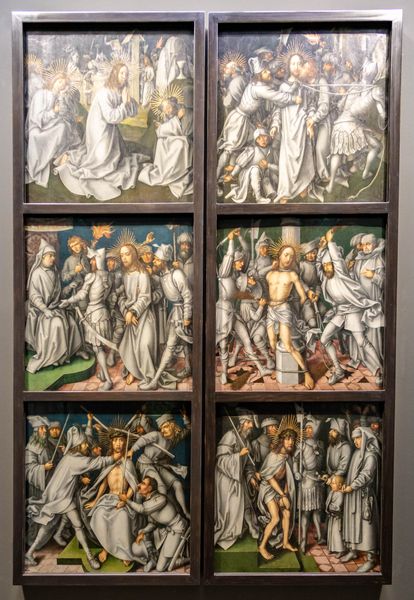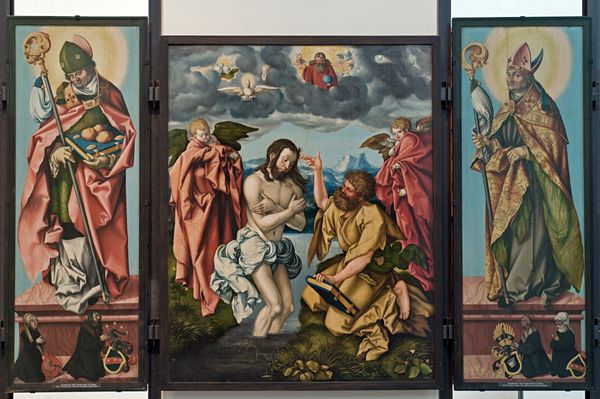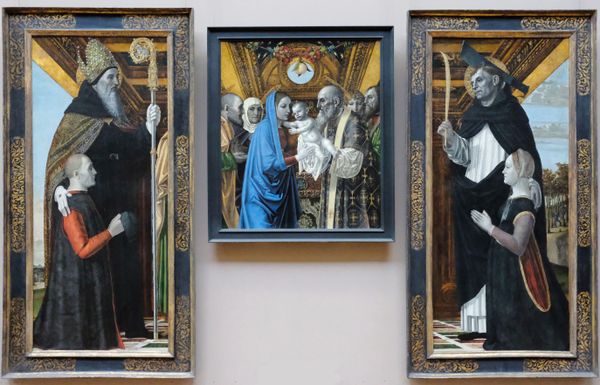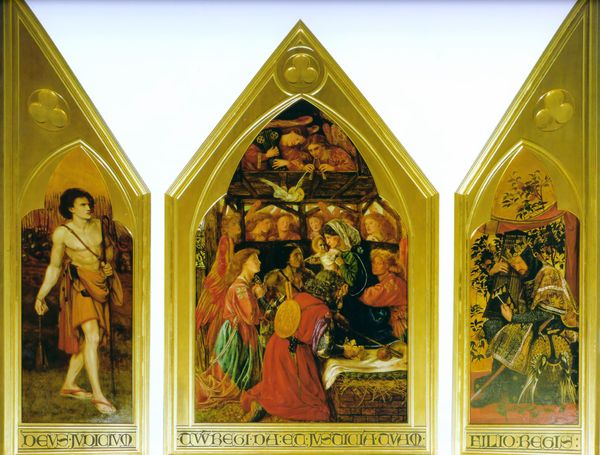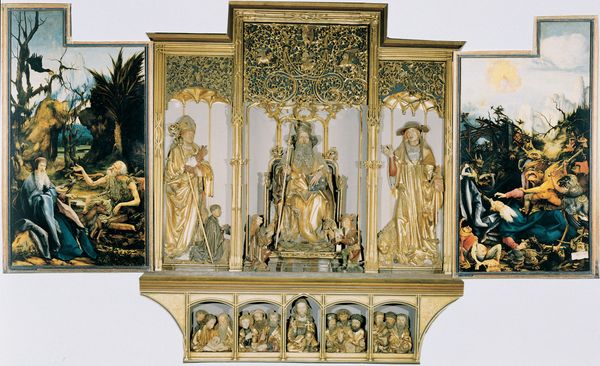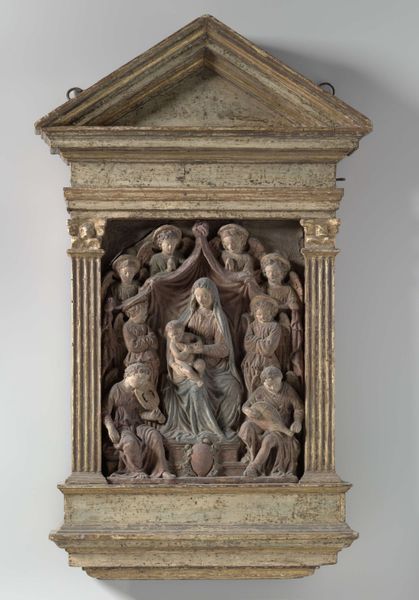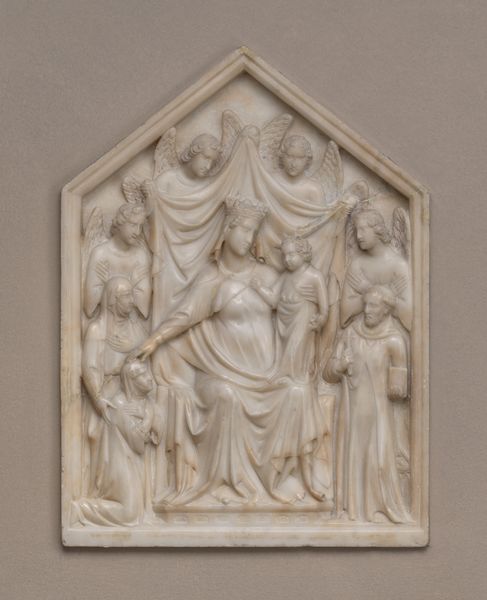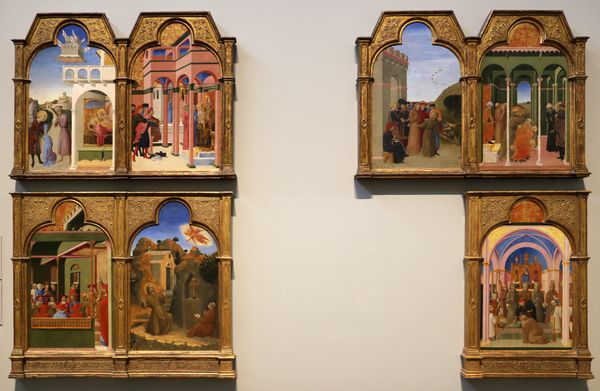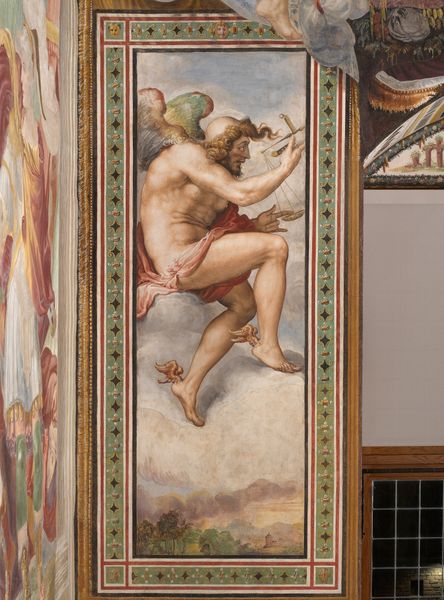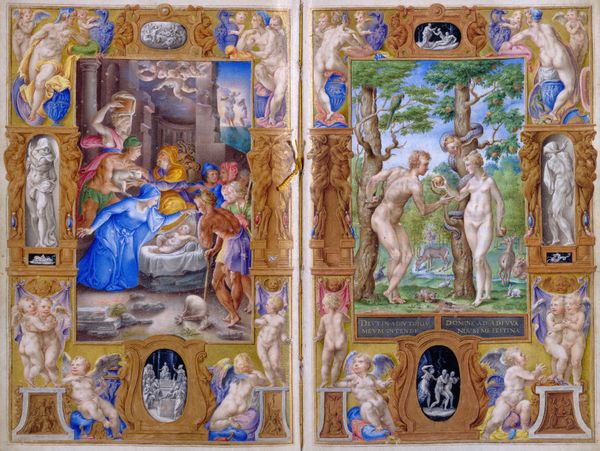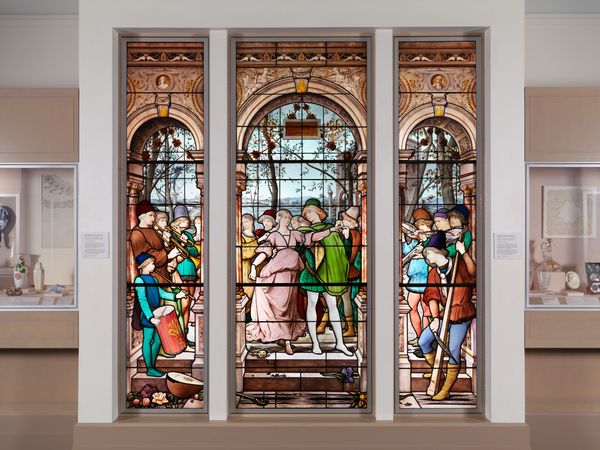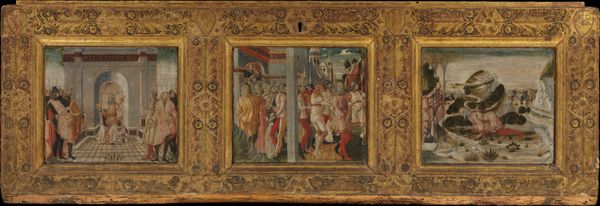
tempera, relief, wood
#
narrative-art
#
tempera
#
relief
#
figuration
#
handmade artwork painting
#
wood
#
history-painting
#
northern-renaissance
Copyright: Public domain
Editor: We’re looking at *Grey Passion*, a tempera on wood relief created around 1500 by Hans Holbein the Elder. It’s striking how the muted palette creates this atmosphere of solemn reflection. What stands out to you? Curator: The reduction to near monochrome serves to flatten the figures and draw our attention to the historical context. This work speaks to the profound social disruptions in Europe during the late 15th century, from the rise of merchant capitalism to the crisis of feudalism, all reflected in religious and social upheavals. How might this portrayal of the Passion resonate with people experiencing social precarity, or even the dawn of something new? Editor: That’s a powerful connection. I hadn't thought about it in terms of social upheaval. Curator: Look closely. The rigid, almost uniform figures, drained of colour, evoke a sense of collective suffering, while also subtly criticizing the power structures of the Church at the time. Where do you see any evidence of criticism, perhaps? Editor: Well, I see in the panel depicting the Resurrection how Christ is in opposition to all other subjects; he looks triumphant against everyone else in that scene, with no hint of being the suffering figure depicted in other sections of the work. Curator: Exactly! Think about it: How does Holbein use visual language to question societal norms, to perhaps challenge the established narratives of power and piety of the time? And does such a quest feel relevant in modern society? Editor: It makes you consider what "passion" means – is it the suffering, or is it also this quiet resistance? This changes my perception of it entirely. Thanks. Curator: It invites us to reflect on how faith, suffering, and resistance intertwine within the narratives we tell ourselves about history and identity. It’s not just a religious scene; it's a historical and social commentary with threads that stretch across time.
Comments
No comments
Be the first to comment and join the conversation on the ultimate creative platform.
